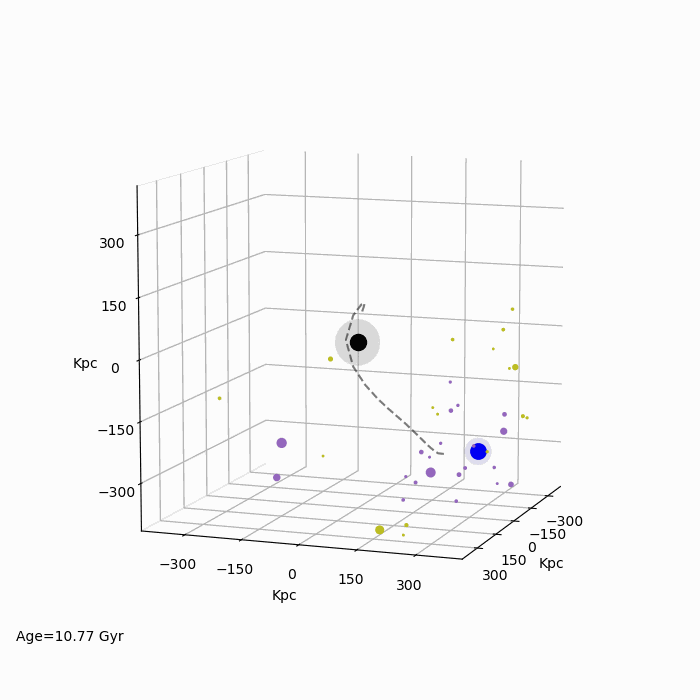

The movie shows the positions of the subhaloes of a particular MW-mass galaxy ('iLincoln') accreted within +/- 1 Gyr of the massive progenitor (LMC-like) in physical galactocentric coordinates at various snapshots. The massive progenitor was accreted 6.5 Gyr ago. The central black circle shows the position of the main MW-mass halo, while the blue circle shows the position of the massive progenitor. The shaded circles show the virial radius of the central MW-mass halo and the massive progenitor. The black dashed-line shows the path of the massive progenitor. The violet circles represent haloes which are assigned as subhaloes of the massive progenitor according to the criterion of Deason et al. 2015. The yellow circles represent haloes which are not assigned as subhaloes to the massive progenitor but which were accreted within +/- 1 Gyr of the massive progenitor. The size of all haloes and subhaloes are scaled according to their peak mass, except the central MW-mass halo and the massive progneitor.
The ELVIS simulation (Garrison-Kimmel et al. 2014) is a suite of 48 high-resolution, zoom-in simulations of MW-mass haloes (virial mass: Mvir = 1-3 x 1012 Msun). Half of the ELVIS haloes reside in a paired configuration with separations and relative velocities similar to those of the MW-M31 pair, while the remainder are highly isolated haloes mass-matched to those in the pairs. The particle mass is 1.9 x 105 Msun and the Plummer-equivalent force softening is 140 pc. ELVIS assumes a WMAP7 cosmology. These high-resolution simulations reach out to 4 RV for paired haloes, and out to 5 RV for isolated haloes, where RV represents the virial radius of the halo. Each simulation contains a maximum of 75 snapshots with the average temporal spacing at about 250 Myr. Further detail of the ELVIS simulations can be found in Garrison-Kimmel et al. 2014.